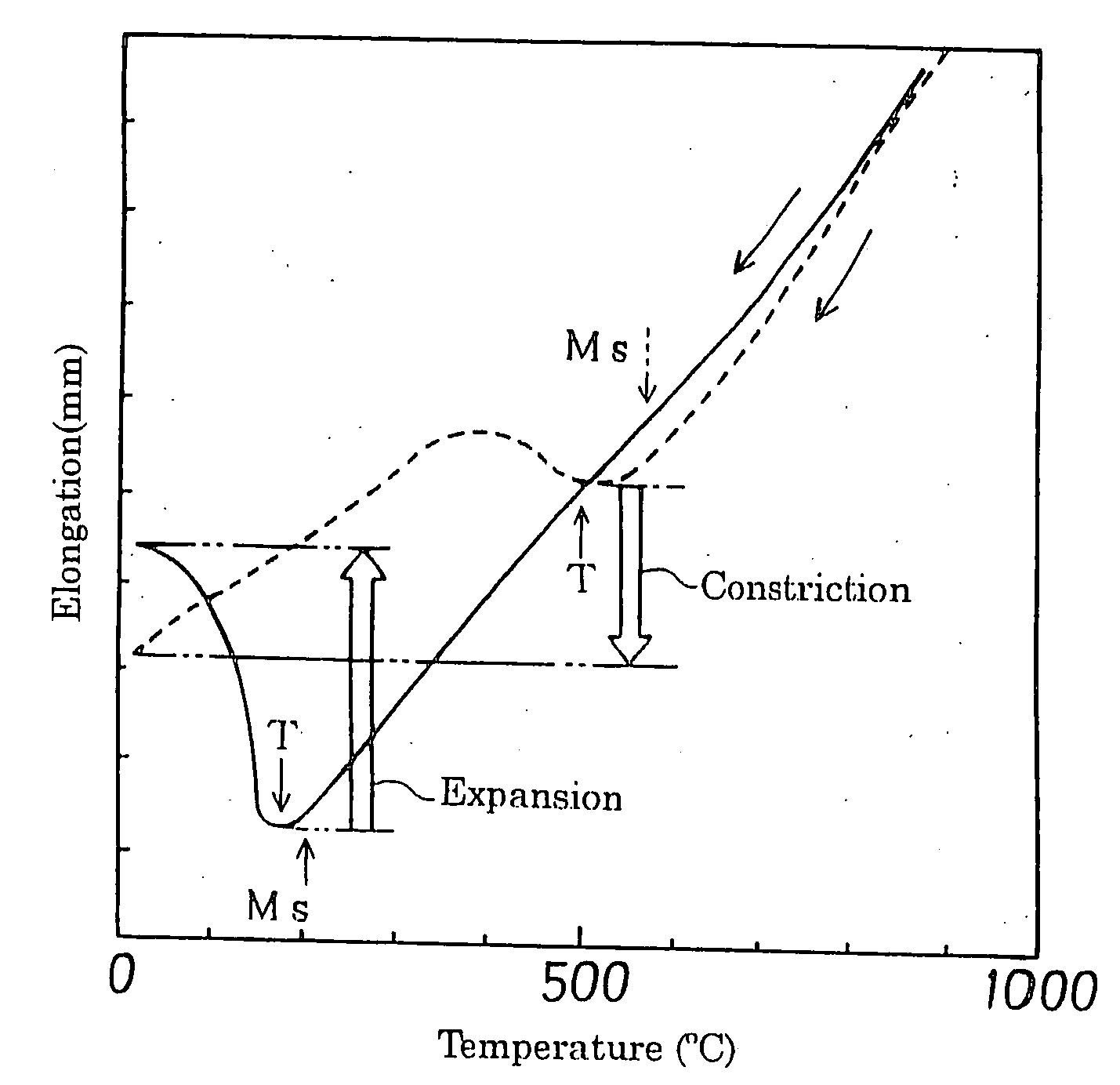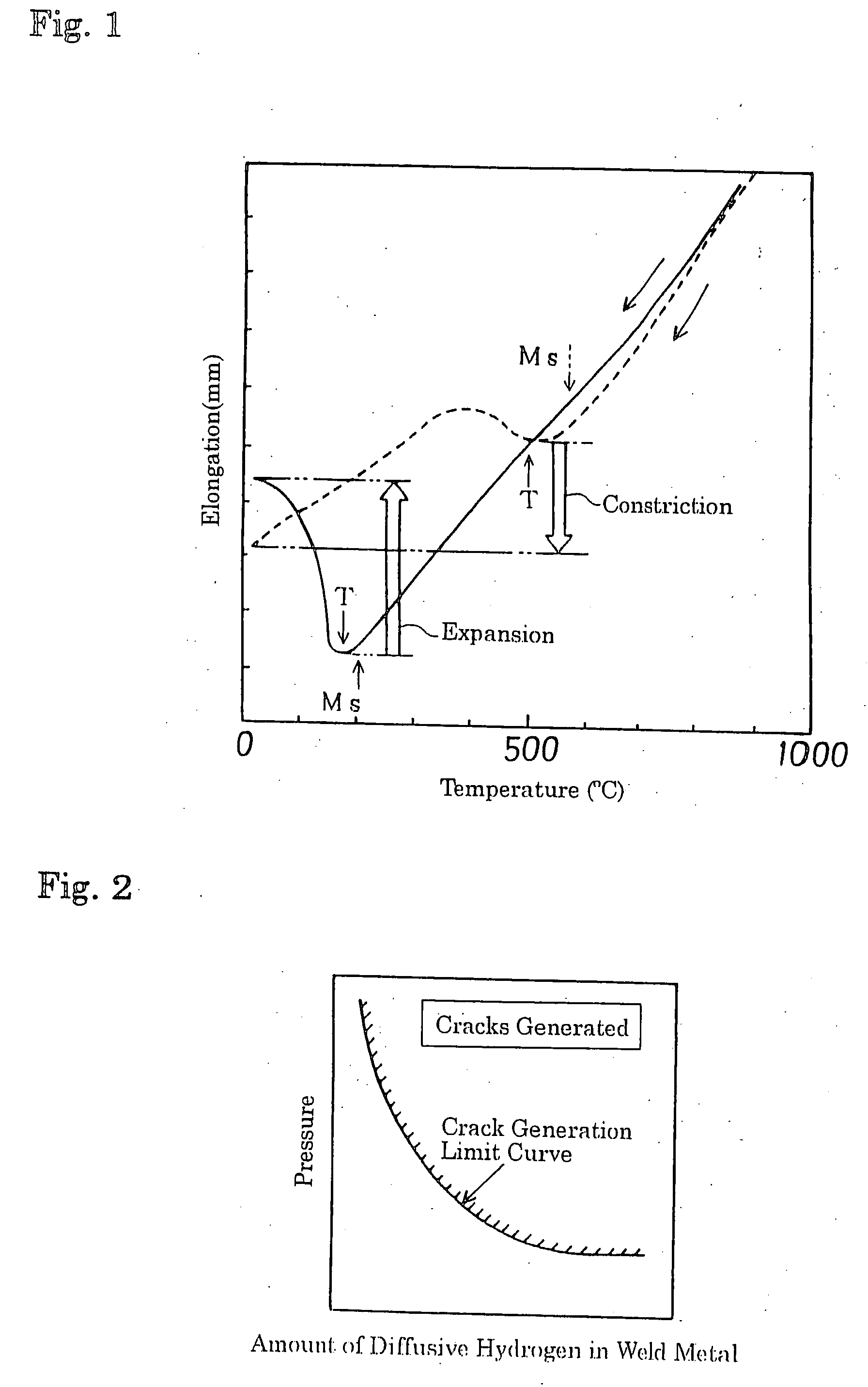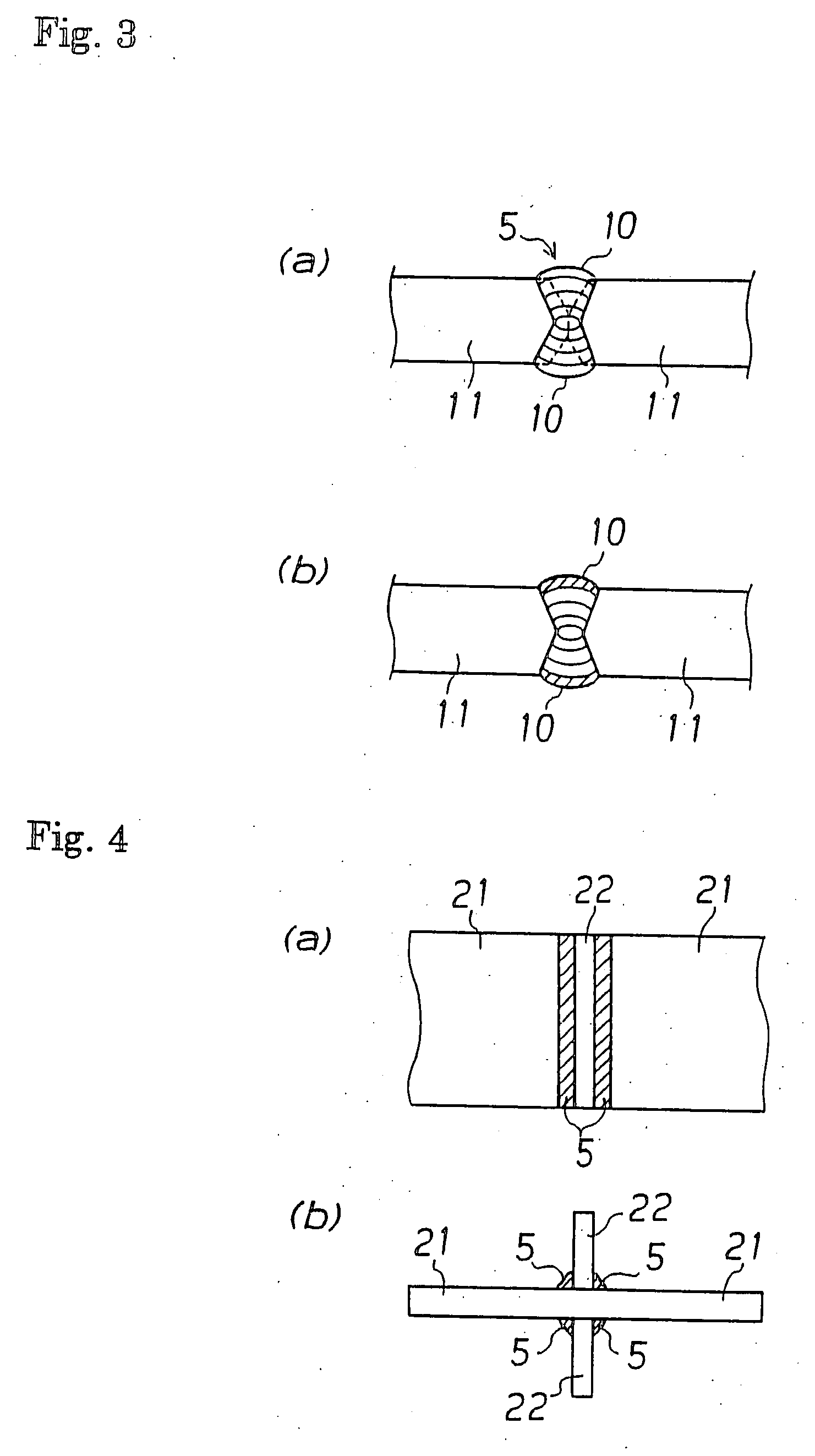Welding material and a method of producing welded joint
a technology of welded joints and welding materials, which is applied in the field of welding materials, can solve the problems of low alloy steel materials of such a type quite often experiencing cracking, low temperature cracking at welded joints of high strength steel materials, and generating cracks therein, so as to improve the fatigue strength of the welded joint and prevent the effect of low temperature cracking
- Summary
- Abstract
- Description
- Claims
- Application Information
AI Technical Summary
Benefits of technology
Problems solved by technology
Method used
Image
Examples
example 1
[0090] The weld-cracking properties were investigated by: using the low alloy steel materials (steel plates) having the compositions shown in Table 1 as the material to be welded; using the compositions shown in Table 2 (the compositions of deposital metal measured according to JIS Z 3111) as the welding material; and using test pieces according to the regulations of JIS Z 3158, under the welding conditions shown in Table 3.
[0091] The tests were conducted in an atmosphere in which the temperature was 30° C. and the relative humidity was 80% as condition 1 and in an atmosphere in which the temperature was 20° C. and the relative humidity was 60% as condition 2, without pre-heating. The test-repeating number was 3, and with respect to the crack generated in the welded portion, presence / absence of crack and the crack rate were measured according to the regulations of JIS Z 3158. The results are shown in FIG. 4.
[0092] In the present example, no low-temperature-cracking was observed, a...
example 2
[0093] A butt welded joint and a cruciform welded joint (the joint length was 0.5 m) shown in FIGS. 3 and 4 were produced by: using the low alloy steel materials (steel plates) having the compositions shown in Table 1 as the material to be welded; and using some of the welding materials whose compositions (the compositions of diposital metal measured according to JIS Z 3111) are shown in Table 2, under the welding conditions shown in Table 5 (without pre-heating and post-heating).
[0094] With respect to these welded joints, the state of crack-generation in the welded portions were investigated by observing the surface of the portions. In addition, with respect to each welded joint, the hardness of the parent material portion and the hardness of the weld metal portion (the average hardness of the weld metal section) were measured. Further, the amount of residual austenite in the weld metal was measured by the X-ray diffraction method. Yet further, fatigue test pieces were collected f...
example 3
[0096] The weld-cracking properties were investigated by: using the low alloy steel materials (steel plates) having the compositions shown in Table 7 as the material to be welded; using the compositions shown in Table 8 (the compositions of deposital metal measured according to JIS Z 3111) as the welding material; and using test pieces according to the regulations of JIS Z 3158, under the welding conditions shown in Table 9.
[0097] The tests were conducted in an atmosphere in which the temperature was 30° C. and the relative humidity was 80% (condition 1) and in an atmosphere in which the temperature was 20° C. and the relative humidity was 60% (condition 2), without pre-heating. Next, an analysis on the composition of the weld metal formed therein was conducted in the vicinity of the bead center portion. The test-repeating number was 3, and with respect to the cracking generated in the welded portion, presence / absence of crack and the cracking rate were measured according to the re...
PUM
| Property | Measurement | Unit |
|---|---|---|
| tensile strength | aaaaa | aaaaa |
| temperature | aaaaa | aaaaa |
| temperature | aaaaa | aaaaa |
Abstract
Description
Claims
Application Information
 Login to View More
Login to View More - R&D
- Intellectual Property
- Life Sciences
- Materials
- Tech Scout
- Unparalleled Data Quality
- Higher Quality Content
- 60% Fewer Hallucinations
Browse by: Latest US Patents, China's latest patents, Technical Efficacy Thesaurus, Application Domain, Technology Topic, Popular Technical Reports.
© 2025 PatSnap. All rights reserved.Legal|Privacy policy|Modern Slavery Act Transparency Statement|Sitemap|About US| Contact US: help@patsnap.com



